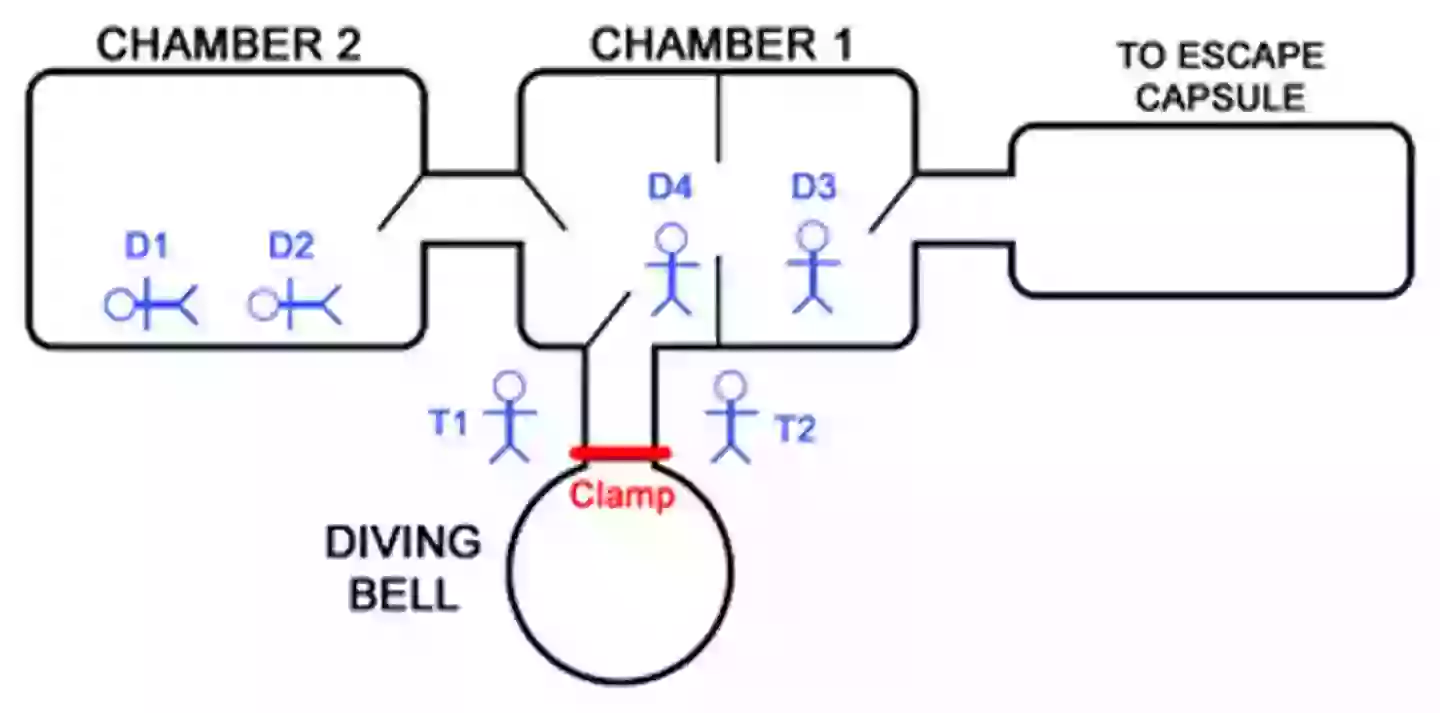
Topics: History
To make sure you never miss out on your favourite NEW stories, we're happy to send you some reminders
Click 'OK' then 'Allow' to enable notifications
Warning: This article contains graphic descriptions which some readers may find distressing
The Byford Dolphin Accident of 1983 produced some of the most harrowing autopsies in human history.
Unfolding in the Norwegian part of the North Sea, a diving bell was hauled up from the ocean floor and attached to saturation chambers, which were there for the five divers to depressurise themselves in safely.
Advert
This is usually done by mixing oxygen and helium in the atmosphere to prevent a buildup of nitrogen in the blood, however, one of the crew allegedly made a cataclysmic error during the operation, killing all of them.
An autopsy report later revealed how four of the five divers suffered instantaneous bodily trauma, the likes of which would turn even the strongest of stomachs.
Fatefully, one of the divers hanging around outside the bell, Billy Crammond, had unlatched it before it had been depressurised, meaning that the chamber system's atmosphere was all wrong.

The bell proceeded to shoot off with immense force, killing Billy, while three of the others pretty much instantly died as their bodily fluids rapidly expanded, causing widespread haemorrhaging.
Advert
The fourth and final diver from inside the chamber was closest to the opening when the clamp was released. As a result, he was completely swallowed by a hole measuring just 60 centimetres across. His corpse was eventually separated into four bags.
"The scalp with long, blond hair was present, but the top of the skull and the brain were missing," the autopsy read. "The soft tissues of the face were found, however, completely separated from the bones. Even the spinal column and most of the ribs had been expelled. The liver had been found somewhere on deck. It was complete as if dissected out of the body."
After decades of legal battling, Crammond's widow Ruth finally received the 'faulty equipment' verdict she'd been fighting for in 2008, following an NSDA investigation.
"Billy's death destroyed me. The fact he was blamed – and many websites still claim he made a mistake – was horrendous," she commented.

Advert
“I couldn’t speak about it. I never told our children their father was to blame. How could I? My son was only eight and idolised his father."
Ruth 'never believed' the claims made against her late husband, knowing that his time served in the Navy illustrated his competency.
“He left the service to try and give a better life to his family and North Sea offered that opportunity,” she recalled. "I used to say to him it was too dangerous, but his response always was that crossing the road was dangerous."
She continued: "A young police officer was sent to my door and I felt so sorry for him. I did not believe what he was telling me. But then I saw it on the news and I just lost it.
"Then, representatives from his company arrived and told me Billy had been negligent and that’s why the men were dead. I carried that shame for 25 long years. It wrecked my life. I did not want to get close to people – the moment they started to ask about Billy I felt I had to move.”
Advert
In light of the verdict, she wanted an apology from the Norwegian government.
"In those days money was the driving force and shortcuts were made to save expense and resources. The divers didn’t necessarily know they were at risk and in many ways were the guinea pigs for the companies to see how far they could push things," she said.
"The various governments involved in North Sea exploration must accept responsibility.”